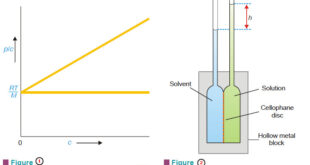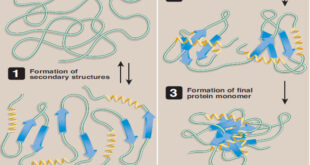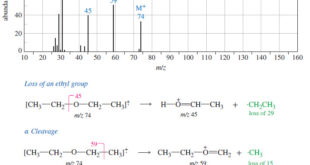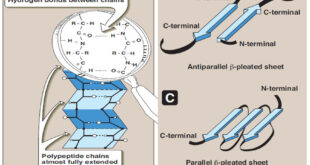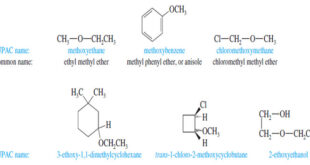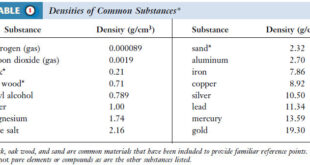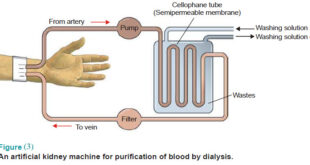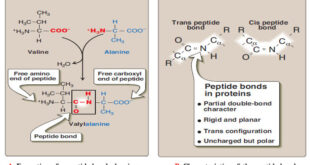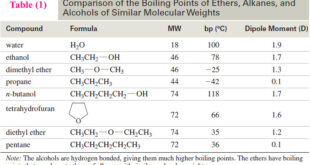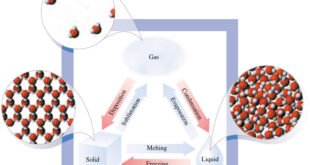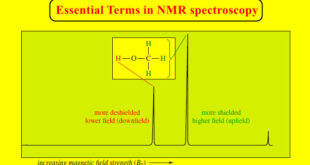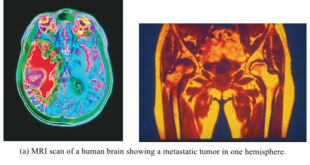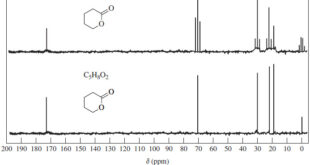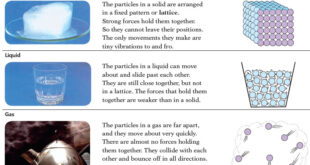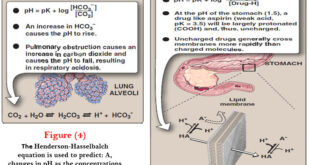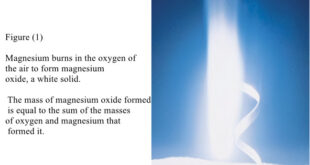– In this topic, we will discuss the Macromolecules : Definition and Molecular Weight What are Macromolecules? – Colloidal solutions are formed by aggregation of atoms or molecules to give particles of colloidal size. – Macromolecules are substances which are themselves composed of giant molecules and dissolve in a solvent …
Read More »Tertiary structure of globular proteins
– In the last topic in biochemistry in our website, we talked about: Primary structure of Protein , Secondary Structure of Protein. now we will discuss Tertiary structure of globular proteins. Tertiary structure of globular proteins – The primary structure of a polypeptide chain determines its tertiary structure. – “Tertiary” …
Read More »Spectroscopy of Ethers : IR, Mass, 13C NMR, 1H NMR
Spectroscopy of Ethers – Here we will discuss Spectroscopy of Ethers: IR Spectroscopy, Mass Spectroscopy, 13C NMR amd 1H NMR. Infrared Spectroscopy of Ethers – Infrared spectra do not show obvious or reliable absorptions for ethers. – Most ethers give a moderate to strong C-O stretch around 1000 to 1200 …
Read More »Heat and Temperature
Difference Between Heat and Temperature – Heat is one form of energy. – Many forms of energy can be interconverted and that in chemical processes, chemical energy is converted to heat energy or vice versa. – The amount of heat a process uses (endothermic) or gives off (exothermic) can tell …
Read More »Protein Secondary Structure
– In the last topic in Biochemistry section , we discussed The Protein Primary Structure but now we will talk about Protein Secondary Structure. Secondary structure of protein – The polypeptide backbone does not assume a random three-dimensional structure, but instead generally forms regular arrangements of amino acids that are …
Read More »Nomenclature of Ethers : Rules, IUPAC Name, Common Name
Nomenclature of Ethers – We have been using the common nomenclature of ethers, which is sometimes called the alkyl alkyl ether system. – The IUPAC system, generally used with more complicated ethers, is sometimes called the alkoxy alkane system. – Common names are almost always used for simple ethers. Common …
Read More »Density and Specific gravity: Definition, Solved problems
– In this topic, we will discuss The Density and Specific gravity: Definition and Solved problems. Definition of Density – In science, we use many terms that involve combinations of different units. – Such quantities may be thought of as unit factors that can be used to convert among these …
Read More »Second Law of Thermodynamics: MCQ Quiz with answers
Second Law of Thermodynamics: MCQ Quiz with answers – In this subject, you will find 49 questions and answers MCQ on The Second Law of Thermodynamics. 1. A process which proceeds of its own accord, without any outside assistance, is called ____ . (a) non-spontaneous process (b) spontaneous process (c) …
Read More »Applications of Colloids
– In this topic, we will discuss The Applications of Colloids. Applications of Colloids – Colloids play an important role in our daily life and industry. – A knowledge of colloid chemistry is essential to understand some of the various natural phenomena around us. – Colloids make up some of …
Read More »Primary structure of Protein
– In this topic, we will discuss The Primary structure of the Protein. Primary structure of Protein – The sequence of amino acids in a protein is called the primary structure of the protein. – Understanding the primary structure of protein is important because many genetic diseases result in proteins …
Read More »Physical Properties of Ethers
– In this topic, we will discuss The Physical Properties of Ethers. Introduction to Ethers – Ethers are compounds of formula R-O-R’ where R and R’ may be alkyl groups or aryl (benzene ring) groups. – Like alcohols, ethers are related to water, with alkyl groups replacing the hydrogen atoms. …
Read More »Physical and Chemical properties of Matter
– In this topic, we will discuss The Physical and Chemical properties of Matter and The Physical and Chemical Changes. Physical and Chemical properties – To distinguish among samples of different kinds of matter, we determine and compare their properties. – We recognize different kinds of matter by their properties, …
Read More »NMR – Essential Terms in NMR spectroscopy
– In this topic, we will discuss some Essential Terms in NMR spectroscopy. Essential Terms in NMR spectroscopy accidentally equivalent nuclei – Nuclei that are not chemically equivalent, yet absorb at nearly the same chemical shift and are not resolved. – Nuclei that absorb at the same chemical shift cannot …
Read More »Nuclear Magnetic Resonance Imaging – NMR imaging
– In this topic, we will discuss Nuclear Magnetic Resonance Imaging. Nuclear magnetic resonance imaging – When chemists use NMR spectroscopy, they take great pains to get the most uniform magnetic field possible (often homogeneous to within one part per billion). – They place small tubes of homogeneous solutions in …
Read More »Interpreting Carbon NMR Spectra
Interpreting Carbon NMR Spectra – Interpreting Carbon NMR Spectra (13C NMR spectra) uses the same principles as interpreting 1H NMR spectra. – In fact, carbon spectra are often easier to interpret. – The 13C NMR spectrum provides the following information: (1) The number of different signals implies how many different …
Read More »Solids, liquids, and gases.
What’s the difference between Solids, liquids, and gases? – It is easy to tell the difference between solids, liquids and gases – A solid has a fixed shape and a fixed volume. It does not flow. Think of all the solid things around you: their shapes and volumes do not …
Read More »Properties of Amino acids – Acidic and Basic Properties
Acidic and Basic Properties of Amino acids – Amino acids in aqueous solution contain weakly acidic α-carboxyl groups and weakly basic α-amino groups. – In addition, each of the acidic and basic amino acids contains an ionizable group in its side chain. – Thus, both free amino acids and some …
Read More »Matter and Energy
Definition of Matter and Energy What is Matter? – Matter is anything that has mass and occupies space. – Mass is a measure of the quantity of matter in a sample of any material. – The more massive an object is, the more force is required to put it in …
Read More »Amino acids – Structure of Amino acids
Structure of Amino acids – Although more than 300 different amino acids have been described in nature, only 20 are commonly found as constituents of mammalian proteins. – Each amino acid (except for proline, which has a secondary amino group) has a carboxyl group, a primary amino group, and a …
Read More »Carbon-13 NMR Spectroscopy
– In this topic, we will discuss The Carbon-13 NMR Spectroscopy. Carbon-13 NMR Spectroscopy – Where does a carbonyl group absorb in the NMR? Where does an internal alkyne absorb? – In the proton NMR, both of these groups are invisible. Sometimes we can infer their presence: If the carbonyl …
Read More » Read Chemistry
Read Chemistry
